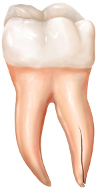What is a Cracked Tooth?
Cracked Teeth and Cracked Tooth Syndrome (CTS)
There are many different types of cracked teeth. Cracks can involve just part of the tooth or may extend through the entire tooth, risking tooth loss. The treatment and prognosis depends on the type, location and extent of the crack.
“Cracked Tooth Syndrome” is the name given to the complex and often bizarre set of symptoms that accompany teeth with different types of cracks. Lets examine the types of problems associated with this finding.
Craze Lines
Craze lines are tiny, shallow surface cracks that affect the outer layer of the tooth known as the enamel. These are extremely common and generally do not require treatment unless for cosmetic purposes.
Figure 1 : Craze Lines
Example of a tooth with Craze Lines
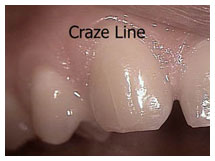
Cusp Fractures
When the pointed part of a tooth (known as the cusp) becomes weakened, a fracture sometimes results in one or more of the cusps. Chewing can cause movement of the cracked portions. This is most often noticed when biting something hard. Many patients say that when chewing they have to hit just the “right spot” to cause this sharp sensation. This weakened portion may break off on its own or be removed by the dentist and restored.
If the fracture does not involve the deeper layers of the tooth or the pulp, endodontic treatment may not be required. A filling, onlay or crown is often used to restore cusp fractures.

Figure 2 : Cracked Cusp
Different Views of a Cracked Cusp involving one corner of the tooth
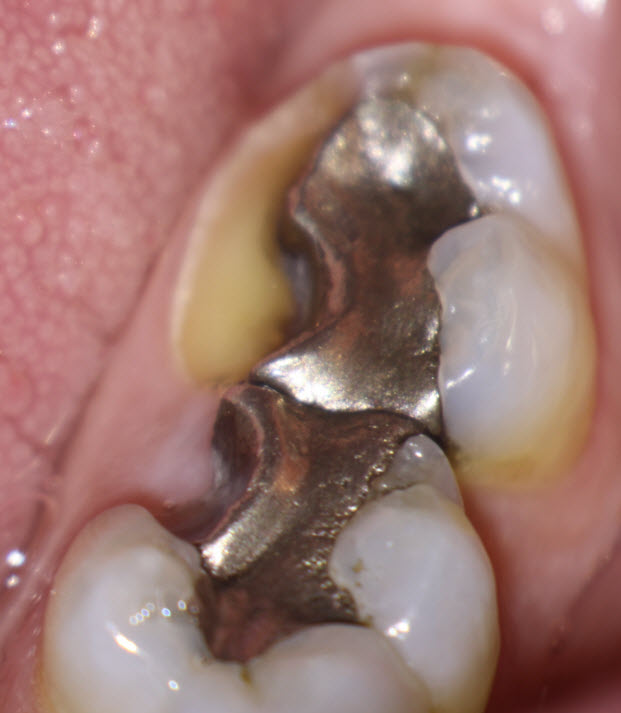
Figure 3 : Cracked Cusps
The front molar has a single cracked cusp, while the one toward the back has two cracked cusps, resulting in loss of an entire side of the tooth.
Cracked Tooth
When a crack extends vertically from the chewing surface toward the root, this is known as a cracked tooth. The crack may extend below the gum line into the root. A cracked tooth is not completely separated into two pieces but because of the depth of the crack, damage to the nerve is common. Root canal treatment is frequently needed to treat the injured pulp and allow for reconstruction of the tooth. Your general dentist will restore the tooth with a full crown which acts to splint the two halves together and prevent further migration of the fracture.
Early diagnosis is important. High powered lighting, magnification and special bite tests can be used to locate the crack. It is sometimes difficult to determine the extent of the crack, especially when it occurs under a filling or crown. A cracked tooth that is not treated will progressively worsen and may reach the Split Tooth stage that results in loss of the tooth.
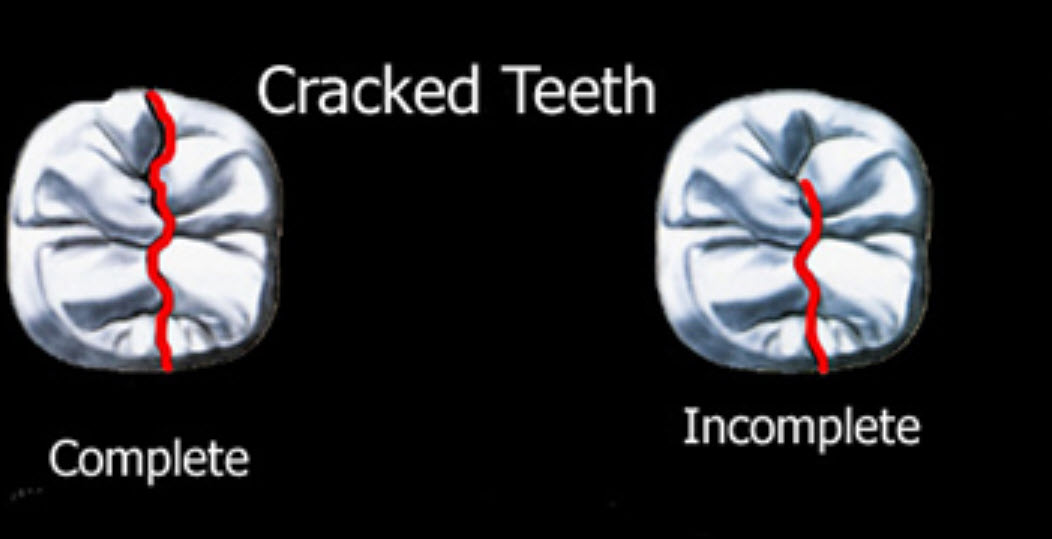
Figure 4 : Cracks in a molar
Cracks usually run through the center of the tooth.
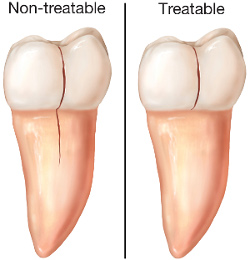
Figure 5 : Cracked Teeth
The extent and depth of the fracture are critical to the decision to treat or extract. It is often difficult to determine the extent of the fracture until the tooth is examined internally during the Endodontic access.
Prognosis
What are the Chances for Success Treating a Cracked Tooth?
Fractured or cracked teeth have highly variable rates of success. The real question when considering when to endodontically treat a tooth ( or extract it) is “How far does the crack extend?” There are several factors that will influence the long term possibilities for keeping the tooth. Close examination of the crack with a high powered Surgical Operating Microscope (SOM) will allow Dr. Kaufmann to assess the extent of the fracture and discuss the prognosis with you before completion of treatment.
The most common reasons for failure of apparently successful Endodontics are Split tooth or Vertical Root Fracture (VRF).
Split Tooth
If left untreated, the crack can extend down the root surface. The split tooth is identified by a crack with distinct segments that can be separated. In that case, the tooth very often must be extracted.
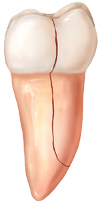
Figure 6 : Split Tooth
Visual of a Split Tooth
Vertical Root Fracture
Cracks that begin in the root of the tooth and extend toward the chewing surface are called Vertical Root Fractures (VRF). VRFs can show minimal signs and symptoms and can go unnoticed for a long time. They are often discovered when the surrounding bone becomes tender or infected. Extraction is usually indicated but sometimes the tooth can be saved by surgically removing the fractured portion of the root.
VRFs are often only visible when the area is surgically explored. If necessary, Dr. Kaufmann will discuss alternative methods of replacing the lost tooth. Your General Dentist will perform the replacement.
Figure 7 : Vertical Root Fracture
Visual of a Vertical Root Fracture
These cracks start at the root end.
